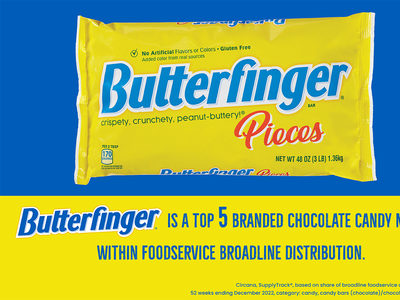 |
It is often said that water can be a baker’s best friend, so it may come as no surprise that a growing number of artisan bread bakers in America are testing the waters by using high-hydration doughs to bake flavorful breads.
Baking experts say that some breads are improved with high hydrations, while others are not. The important thing is to start with the desired characteristics (flavor, crumb structure, texture, crust, etc.) and work from there.
Some say that high hydration works particularly well in a low-moisture baking chamber such as wood-fire ovens. But that is far from the driving force behind this movement.
Jim Lahey of New York City’s Sullivan Street Bakery helped popularize the trend toward using shaggy, sticky doughs to develop flavor when he unveiled his no-knead bread recipe, which became one of the most popular recipes ever published by the New York Times.
Chad Robertson of Tartine in San Francisco explains that a moist dough will have more volume and will ferment at a lower rate to take on more layered flavors. “But generally the combination of more water and baking to a higher internal temperature will also gelatinize the starch more thoroughly, and gelatinized starch forms an important part of the texture of the crumb,” he adds.
Chris Matsch of Ibis Bakery in Lenexa, Kansas, became inspired to be a bread baker once he tasted the breads of Tartine while visiting San Francisco. Starting with a liquid levain, the Ibis bakers will follow a two-day ritual, spanning 18 to 20 hours from initial feed to bake and producing up to 200 loaves a day through the week and 300 loaves on Saturdays. Their doughs push the 85 percent hydration limit, meaning these doughs are very wet and sticky.
At Babette’s in Denver, Colorado, owner Steve Scott starts with a mild levain and high hydration, developing strength through punching and folding by hand rather than mechanical mixing, and retarding for 12 to 18 hours. This is Scott’s daily ritual in his quest toward perfection. “My standards for each and every product are set very high,” he says.
It’s hard now to imagine that a year ago Chicago’s popular Baker Miller Bakery & Millhouse considered cutting its bread program completely, so it could focus on other products and reduce labor costs. However, when customers caught wind of it, they were not pleased. The unique style of the bakery’s bread made it stand out among offerings in the city. Customers couldn’t find bread like it anywhere else, so Baker Miller decided to keep going, but rework how it is prepared and reduce the variety of breads they sell.
Owner Dave Miller explains that Baker Miller uses a no-knead method to produce bread that is folded four times, every hour and a half, before it is panned and baked. They sell two types of loaves a day, a sourdough and a sunflower rye, and incorporate other varieties into the restaurant’s menu.
For many bakers working with high-hydration doughs, they find the process to be complex but gratifying once they achieved their desired results. It’s not for everyone, nor every type of bread. But when done right, the final results can approach bread perfection.




